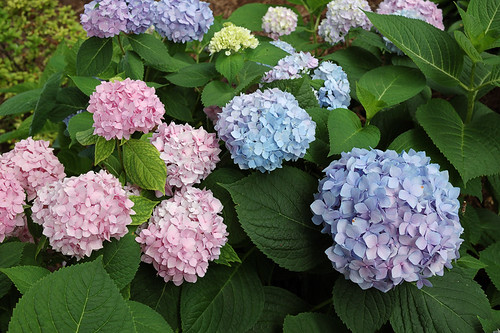
I took this photo yesterday in Clara's Garden, at Sacred Heart Church, in Florissant, Missouri.
These flowers are unusual because they can have a range of hues. I've heard two theories about this: one is that the flowers respond to the pH of the soil, with pink flowers growing in acid soil, white in neutral, and blue in alkaline, very similar to the laboratory's Litmus paper test. The other theory is that rusty nails driven into the ground will change the color of the flowers.
The name Hydrangea derives from the Greek, meaning ‘water vessel’. The genus Hydrangea is native to the Americas and East Asia, although it seems that the common cultivated species, as seen here, come from Japan. Hydrangeas form flower heads with fertile flowers in the center being surrounded by showy sterile flowers: but in cultivated species, all the flowers are sterile and so the plant does not propagate, which is a very desirable trait for decorative non-native species. However, these flower bushes tend to be long-lived, lasting for decades.


No comments:
Post a Comment